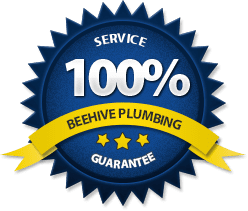Pipe Lining in Salt Lake City
When customers approach us to repair or replace their pipes, they’re often very worried about the disruption it will cause. The last thing they want is to deal with invasive work that turns their property upside down for a prolonged period.
However, pipe issues don’t resolve themselves. Ignoring them is a major risk. If you leave a pipe problem to worsen, you may end up suffering even more disruption at a later date. A great compromise is to install pipe lining. It restores your pipes’ functionality without having to perform the huge upheaval of a full plumbing replacement.
What is Pipe Lining?
Do you need to repair a broken pipe, but you don’t want your property torn up? Instead of replacing the pipe, why not add lining?
Pipe lining is a quick but lasting solution to pipe damage that doesn’t disrupt your yard. It involves a trenchless lining technique. The lining is applied without excavating the pipe, leaving your landscaping and pavement undisturbed. It also simplifies the repair process, saving you time, effort, and money.
At Beehive Plumbing, our professionals can apply pipe lining in a quick and efficient manner to our residential and business customers all over Utah. Our same-day services will shore up your plumbing system, which we guarantee for 50 years.
Choosing a New Commercial Water Heater
The sooner you apply a new lining, the more good it will do. You should thus watch for common signs of pipe damage, which include:
Higher Spending
If your water bill inexplicably goes up, there may be a leak somewhere. We can come out and diagnose the problem, then use pipe lining to resolve it!
Foul Smells
If you notice an odor near plumbing fixtures, the pipes may not be carrying sewage out of your home. Pipe lining can improve the functionality of your pipes.
Strange Noises
Banging, whistling, clanking, or bubbling noises can all come from a cracked pipe. Rather than replace the pipe, lining can prolong its integrity.
Pressure Changes
Leaks can prevent your pipes from providing enough water pressure, or even stop the flow entirely. You might choose to install new ones or you might choose to install pipe lining.
How Does Pipe Lining Work
Pipe lining is a tube made from a flexible substance and covered in resin. Also known as cured-in-place piping, or CIPP, the lining is heated to a flexible temperature, placed inside the damaged pipe, and allowed to cool and harden. This fills in the leak, leaving the pipe fully functional.
Because installing lining doesn’t require excavating the pipe, there is little chance of damage to your house, office, or yard. The epoxy resin used to hold it in place also does not harm the surrounding environment. Best of all, because linings are only a few millimeters in thickness, they do not substantially reduce the flow of water; indeed, their smoother structure may actually make it flow more effectively.
Why Beehive's Pipe Lining Stands Out
Beehive Plumbing provides the highest quality pipe lining to all Utah customers. Our materials are notable for their ability to:
- Stand up to mechanical fatigue
- Resist corrosive chemicals
- Shake off physical impacts
- Remain in good condition regardless of moisture
The Process of Pipe Lining

1. Inspection
We begin by using a camera line to examine the pipe’s interior. We assess the nature of the damage, as well as how serious it has become. We then determine what type of lining to use and where it needs to be placed.

2. Cleaning
We flush clogs, debris, and anything else that might block the lining out of the pipe. This ensures that the resin will stick directly to the interior walls.

3. Insertion
We heat the lining and place it in the pipe, making sure that it sticks directly to the interior walls and covers all of the affected area. We then inflate it so that it bonds tightly with the pipe.

4. Video Assessment
Once the lining is in place and fully inflated, we put the camera line back in the pipe and conduct a second inspection. This lets us make sure that the lining has inflated fully, is properly bonded, and does not leave any damage uncovered.

5. Release
At the very end, we let out the air, leaving the pipe in full working order. If all the previous steps were followed correctly, the pipe should stay in good condition for decades.
This process can correct cracks, breaks, corrosion, or virtually any other type of pipe damage. The only pipes it cannot fix are those that have been crushed, as they no longer have a round structure to bond the lining to.
Frequently Asked Questions About Trenchless Pipelining
This is an effective pipe repair process that involves installing a lining to seal the inside of the pipe. This stops leaking, even if the pipe itself is cracked or worn out, and it also keeps roots from growing into the pipe.
Trenchless pipelining is achieved through an access point, avoiding the need for a trench to be dug. It’s less expensive and less disruptive than performing a full pipe replacement.
A visual inspection is first undertaken to assess the scale of the problem and to determine which pipes need to be lined. The pipes are then prepared to be lined with special epoxies. The liner is then moved into the pipe where it is secured using a pressurizing and steam curing process. Finally, another inspection is carried out to confirm that the pipe is now fully functional.
The exact amount that you will pay depends on the length of pipe that you need to line. It may also increase or decrease based on how easily the pipe can be accessed and the pipe’s condition. Because trenchless pipelining takes less time than performing a full pipe replacement, it costs less. Most people feel that avoiding the disruption of a full replacement makes trenchless pipelining great value for money.
The team at Beehive Plumbing has the experience, equipment, and training to perform pipelining to the highest level. If they need to dig at all, it will be in a legitimate situation where lining is simply not an option. One example of this might be when a sewer line has totally collapsed.
Generally, this is another term used to describe pipelining! However, you should check this with any plumbing service provider that you approach. They may be using this term to simply describe cleaning out your pipe. This isn’t always sufficient, as a clean pipe can still be a leaky one! You should confirm the specific process of any plumber that you hire to ensure that liner will be installed during a zero dig pipe repair.
Absolutely! Pipelining has proven to be a very effective fix in this situation. After all, when roots are chemically removed from a pipe or physically cut away, they can still grow back. Even if you take the drastic measure of cutting down the tree entirely, roots may persist for up to five years later. This is why so many people opt for pipelining when they’re experiencing difficulties with tree roots in their sewer line.
To find out, you might first ask yourself the following questions:
Do I have a damaged or compromised pipe?
Am I worried about the cost of fixing this pipe?
Would I prefer to avoid the inconvenience of a full pipe replacement job?
Am I worried about disruption to my property during a plumbing repair?
If you answered yes to all of the above, it sounds like pipelining might be right for you. Of course, you should first ask for your situation to be evaluated by the experts at Beehive Plumbing. They will check what’s wrong with your pipe and where the troublesome pipe is located.
If it’s cracked, deteriorated, suffering from rust or roots, or leaking, then pipelining is probably the right path for you. However, if the pipe is entirely crushed or collapsed, it’s not going to be suitable. Some degree of excavation and replacement will most likely be required. Many people who want to repair plumbing quickly and affordably before they sell their home choose pipelining.
Yes! In fact, it can often be much safer than digging up to access a pipe. There’s no risk of disruption to your property, so you can consider your home, your yard, your driveway, and the sidewalk by your place completely safe.
When we line a pipe, there’s zero risk of cracking one by exerting too much pressure or accidentally causing an issue with its slope. No matter what work we do, Beehive Plumbing is meticulous and cautious; however, the risk of unexpected issues arising is generally decreased during the pipelining process.
Absolutely not! In fact, we’re happy to guarantee our pipelining for up to 50 years. Although lining a pipe is literally a quicker process than repairing or replacing one, it’s not a “quick fix” or a way to cut corners. It really is effective!
You might find that your homeowners insurance covers a portion of the cost. Even if it doesn’t, though, you’ll find it a lot less expensive than a conventional pipe repair or replacement. When you choose Beehive Plumbing to handle your pipelining, you can also benefit from our financing options. You can apply for plumbing financing which allows you to spread the cost of pipelining over a longer period, making it even more affordable.
You should never allow just anyone to interfere with your plumbing system. Just because someone has all the equipment doesn’t mean they have the training and qualifications to perform the work. You avoid the risk of cowboy contractors when you hire a reputable local business like Beehive Plumbing. We’re well known in Salt Lake City and beyond as a trustworthy plumbing solution, so we’re ideally placed to handle your pipelining.
If you have more questions about pipelining that you’d like to be answered by an experienced professional, feel free to contact us at any time. We’d be delighted to explain more about this cost-effective and convenient plumbing solution.
Beehive Plumbing: Utah’s Leading Pipe Lining Service
Beehive Plumbing provides same-day pipe lining installation and other plumbing services for businesses and homes across Utah. We are available 24 hours a day, 7 days a week, and we offer financing support as well as guaranteeing all of our services 100%.
For more information about effective, non-invasive plumbing, visit our website today or call us at 801-803-6957. Explore our plumbing repair guide to learn more about common plumbing repairs.













